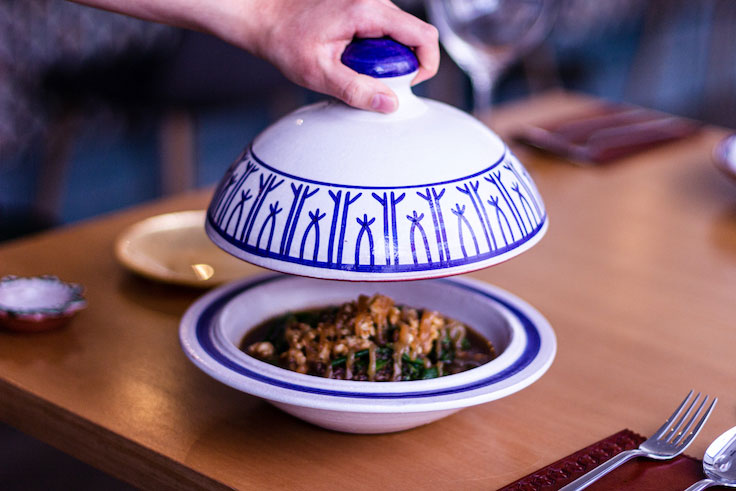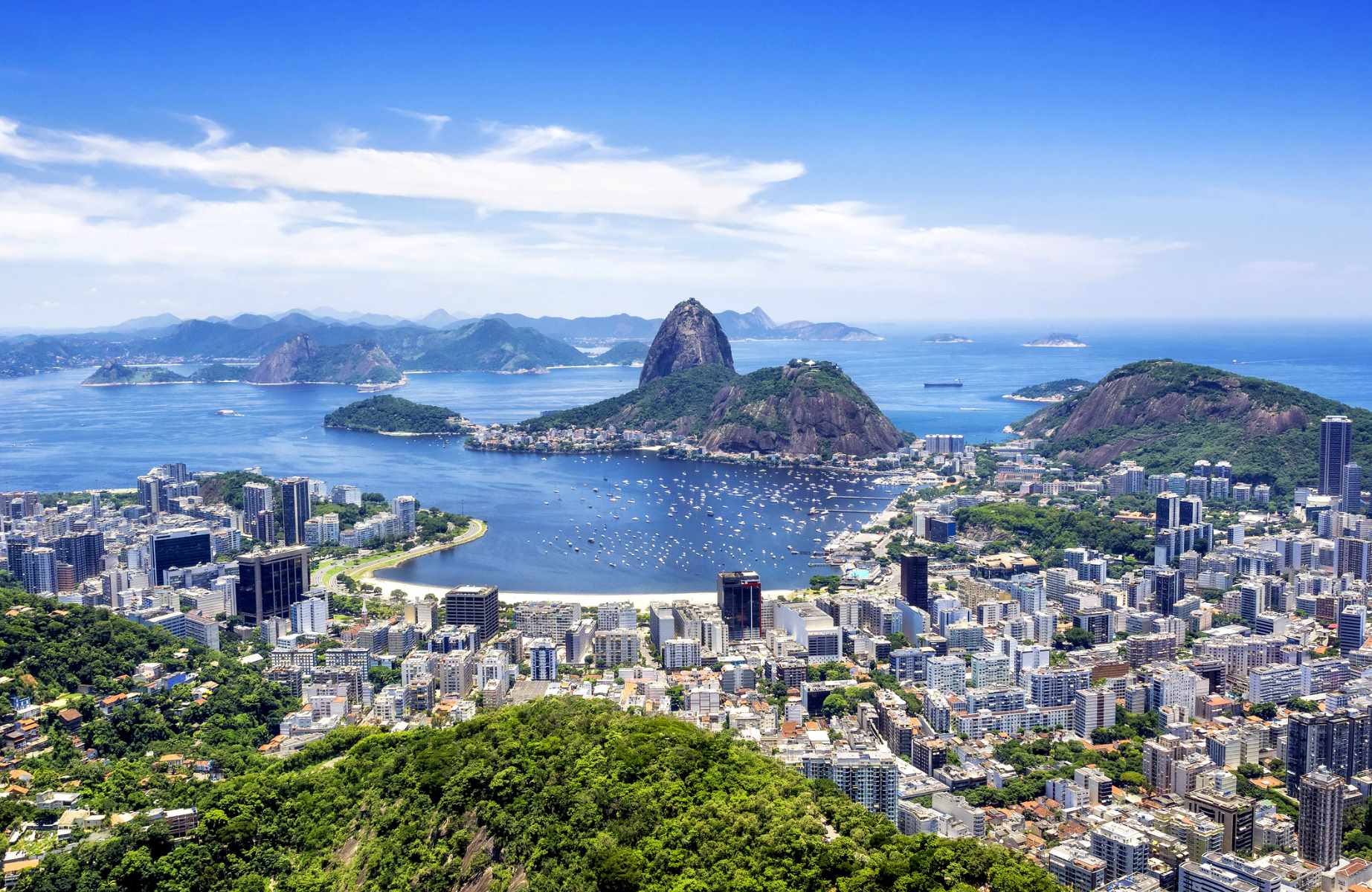Reflecting the centuries-long Arab and Muslim presence in Andalusia, The MICHELIN Guide’s current selections include outstanding restaurants and hotels that are reminiscent of the era of Al-Andalus. The Arab population in this part of southern Spain from the Umayyad conquest in the early 8th century until the Reconquista in 1492 have heavily influenced the region's culture and gastronomy.
Córdoba, Steeped in History
It would not be possible to write about Andalusian restaurants without mentioning the work of Paco Morales and Paola Gualandi at Noor. In record time (just over seven years) they have been awarded Three MICHELIN stars in this small restaurant in the Cañero neighborhood of Córdoba, where Paco grew up. We asked him how Arab culture has influenced his cooking.
Through the medium of fine dining, Noor takes diners on a historical journey to experience the feeling of bygone times in the city of Córdoba. They do this, Paco says, by working "side by side with historians, artisans, architects, and other experts in Andalusian culture." Each season, this multidisciplinary team visits "historical landscapes" to "devise the new menu around a specific view of the past from an Andalusian perspective." In the 2022-2023 season, for example, they ventured out from their kitchen to interpret the assimilation of Hispano-Arabic cuisine, as well as its introduction to the American continent. In the 2023-2024 season, which ended in July before the new one begins in September, they “designed [their] menu by reinterpreting the milestones of the gastronomic journey across Andalusia.”

One accommodation option near this Three Star restaurant is Hospes Palacio del Bailío. This hotel is a magnificent example of the preservation of a Roman villa, the vestiges of which can be seen through the glass floor of the atrium in the main building. Also dating back to Roman times are the underground thermal baths, which are now part of the spa facilities and can be accessed via the Patio de los Naranjos and the Mudéjar area of the hotel. Just a 15-minute walk from the Mezquita de Córdoba, the thousand-year-old mosque, this establishment shows how different historical periods can be amalgamated. The rooms and suites, equipped with all mod cons, hark back to the splendor of the 10th century city, still containing the hand-painted stuccowork, palatial elements, vaulted ceilings, and stone arches of the former palace. These architectural features are perfectly integrated into a contemporary interior design, in which every detail is carefully curated for the benefit of the traveler, such as the outdoor swimming pool surrounded by plants and fruit trees, making this hotel a real oasis in the historical center of the city. In addition, the hotel has earned various certifications for its sustainable practices.

A Trip to Puente Genil
Next we head to another mansion, this time in the town of Puente Genil in the province of Córdoba, where the Bib Gourmand restaurant Alma Ezequiel Montilla is located. The team tells us more about this personal project from Chef Ezequiel Montilla, who has worked in Spain, England, France, and Morocco. "Today, Alma is housed in an early 20th-century mansion in Puente Genil. It is reminiscent of Mozarab culture, as it is modelled on the Palacete de Medinaceli in Seville, which is now known as ‘La Casa de Pilatos’. The doors and windows have the multi-foiled arches characteristic of this culture, and the fountain in the central courtyard is a replica of the fountain in the courtyard of the Generalife in the Alhambra. This unique and charming place exudes a cozy and authentic atmosphere that invites you to imagine you are in a riad (a traditional Moroccan house with an inner courtyard) in the medina (old fortified city) of Marrakech. In this way, our guests get to have both a gastronomic and a cultural experience.”
"Ezequiel first came into contact with Morocco in September 2015, during a holiday in Marrakech. This trip sparked an interest in the local food culture, which led him to become Head Chef at the Hotel Sidi Maarouf in Casablanca a year later." During his two-year stint there, the chef traveled regularly to Marrakech and other nearby cities such as Fez.
"Al-Andalus has a special significance in this city, as at the time it was one of the great foreign territories of the Caliphate of Córdoba. Both Córdoba and Fez play an important role in our restaurant, as some of our crockery is ceramic tableware from Fez, Califal, and a nearby village, La Rambla, which is famous for its pottery. Our cooking draws on memories of our grandparents' houses, where food was lovingly prepared as time faded into the background. It was an invitation to bask in the tranquility and serenity that are central to Moroccan culture.”

"At Alma, we make the meal a gastronomic ‘journey’ in which the surroundings and crockery also play a role, but in which the food takes center stage. We use ingredients such as almonds, saffron, argan oil, and spices from Morocco for the emblematic dishes that are an integral part of our menu, such as pastilla (chicken in puff pastry with almonds, icing sugar, and cinnamon), tagines (beef with walnuts and quince, bluefin tuna with vegetables, or lamb with dried apricots and prunes), beef kofta skewers, chickpea hummus, muhammara (spicy dip) and occasionally our couscous."

The Arab Side of Seville
Now on to the province of Seville, on the border of the municipality of Puente Genil. In the eponymous capital city is the restaurant Az-Zait, another Bib Gourmand restaurant, whose Arabic name means ‘olive juice’ — giving us a sense of the restaurant's passion for olive oil, which is produced here. This passion makes itself felt over the course of the 6 and 7 course tasting menus, which bear the names of the establishment's olive groves, El Lavadero and Cerro de los Olivos. The carefully curated menus include dishes that showcase the traditional and international cooking style of this restaurant located on Plaza de San Lorenzo, in the center of Seville's old town.
For accommodation in the city, you can choose between two Arab-inspired hotels. Firstly, there's Hotel EME Catedral Mercer, situated directly opposite the iconic Giralda of Seville (once a minaret, now the bell tower of the cathedral). The team tells us more about the hotel’s site: "The Hotel EME Catedral Mercer in Seville is located in a historical building from the 16th century, which originally comprised 14 typical Andalusian houses. The renovation was led by architect Juan Pedro Donaire from Granada. The result is a modern luxury hotel that pays homage to its Andalusian roots in a contemporary architectural style. Like the typical houses of the Barrio de Santa Cruz (the medieval Jewish quarter of Seville), the center of the EME Catedral Mercer hotel has a central patio from which the hotel rooms can be accessed."

"The Patio de los Naranjos is lined with an imposing Duralmond structure, whose design is inspired by the ‘sebka’ (Arabic for ‘net’), the Islamic woven ornamentation that calls to mind a modern Arab-style latticework. This decorative symbol, typical in Islamic art, is a leitmotif throughout the hotel, appearing in some guestrooms, in the corridors of the hotel, and even on the counters of the panoramic rooftop bar, which boasts views of the cathedral and the Giralda."

The other Sevillian hotel that takes us back to the time of Al-Andalus is CoolRooms Palacio Villapanés. At the hotel, which marries a traditional sense of grandeur with contemporary indulgence, we are told: "Our hotel is living testimony to the profound Arab influence on the city's architecture and culture. The features of this majestic 18th century palace reflect the Andalusian heritage that shaped Seville during the centuries it was under Arab rule. The inner courtyards, decorated with fountains and gardens, evoke the essence of traditional Arab patios, designed as a refreshing oasis of calm amid the hustle and bustle of the city. Fountains, a central element of Islamic architecture, not only embellish the space, but also create a serene atmosphere thanks to the relaxing sound of the water. The arches, tiles, and geometrical decorations of the hotel are a clear nod to the Mudéjar aesthetic, a style that combines Christian and Muslim architecture and is emblematic of the region."

"The former home of Admiral López-Pintado is now one of the most authentic accommodations in Seville, where historical details rub shoulders with international design pieces by GCA Arquitectos and Patricia Urquiola. It is one of the most iconic and best-preserved palaces in Seville, built by López-Pintado, one of the most important figures in the history of Andalusia. Later given the title of Marquis of Torre Blanca de Aljarafe, he was a Lieutenant General in the navy, landowner, businessman, breeder, winemaker, art collector, and lover of good food.”
Built around 1729, the palace was designed by Diego Antonio Díaz, the archbishopric's master builder and possibly the most innovative architect of the time. As the hotel team tells us: "The original construction, a two-story building with double-arched bay windows on columns, follows the style of the Sevillian courtyard house with a long façade bay that includes the entrance hall and the coach houses."

"Since December 2009, the Palacio de Villapanés has been protected by the City of Seville, as it is considered one of the most important Baroque buildings of the 18th century and has preserved most of its original architectural elements. It’s a marvel of hospitality and the perfect base for discovering the city."
One Last Recommendation in Puerto de Santa María
Last but not least, we come to another tip from the MICHELIN Inspectors: a restaurant in the town of El Puerto de Santa María, in the province of Cádiz. Tohqa is housed in a former convent that, prior to this project, had already been a bar and a restaurant. Chef Eduardo Pérez runs the business with his brother Juan José (who is in charge of the wine cellar), presenting his own take on local gastronomy. The restaurant team informs us: "Tohqa was created in 2020 on the banks of the Guadalete River, and from the outset has represented contemporary Andalusian cuisine. To do this, it is fundamentally important for us to know and appreciate our history, and the era of Al-Andalus was undoubtedly one of the most glorious moments of this land lying to the north of Africa."
This heritage makes its presence felt on a daily basis "in the use of acidulants such as agraz (a type of sorbet), bitter orange, and sour pomegranate vinegar; in spicy pestle-and-mortar dressings enhanced with mint; or in goat's milk infused with fruit." It’s also noticeable in the deployment of spices and the quest to "erase the boundaries between savory and sweet." As the chef himself says in reference to the essence of his culinary offering and what he aims to convey: "Serán porque somos, somos porque fueron.” Roughly translated, it means: “They will be because we are, we are because they were.”

Hero Image: Interior of the Córdoba restaurant Noor (© Javier Peña)


















